A core challenge for all businesses is to understand, anticipate, and prepare for competitive activity in the marketplace. A powerful tool is business war games, which use war game strategy to arrive at unique perspectives on a business strategy. This is a unique method of strategic thinking that considers elements of a plan that are often missed in traditional strategic planning.
Many business plans contain a section on competition, but the level of detail is often woefully inadequate to arrive at any sort of meaningful understanding of the competitive landscape. Business wargaming can be a powerful way to address this competitive landscape in your business strategy.
Business war games are designed to dive deeply into the competitive environment and to gain a robust understanding of how competitors may behave and what options are available to each. Additionally, war games usually consider "uncontrollable" elements such as regulation, economy, weather, market trends, and technology.
The Asymmetric Business Wargaming Framework

The Asymmetric approach to business war games is to identify the primary competitors in a given marketplace - usually competing companies, brands, or products. We start with a deep dive into the existing market research, including studies on consumer behavior, pricing, brand awareness, and any other insights that may be available.
A team approach is ideal. War games are most effective when a cross-functional group of people, from a range of different levels of seniority, are assembled into three to four teams consisting of approximately six people each.
In war gaming, one team represents the "home team," or the client company's brand or product. Teams two and three each represent one of the most significant competitors in the marketplace. The fourth team represents "the market," - such elements as regulation, government intervention, the economy, technology, etc.

Strategic Thinking Frameworks
We like to start business strategy sessions with a half-day session that covers concepts of conflict such as The Art of War, and other principles of military strategy. An introduction to competitive strategies and frameworks, such as Blue Ocean Strategy, Porter's Five Forces, SWOT Analysis, and Strategic Group Analysis is presented so that the team has access to similar tools and models during the war game process.

The remainder of the first day and all of the second day are divided into a series of business strategy sessions where the teams break out to evaluate the situation, analyze their competition using the frameworks, and develop a range of competitive strategies and tactics designed to exploit their unique set of strengths and weaknesses in the context of their competition.
After each break-out session of the war game, the teams come back together to present their findings - often in a highly energized, fun, and competitive environment. War gaming is a unique opportunity for team building in addition to its role as a strategy development process.
In the end, the work is condensed into a finding report that is then used by the company's leadership and marketing teams to design strategies, plans, campaigns, and contingency plans - all designed to address the unique competitive situation that the company is facing.
Where do War Games Fit in the Planning Process?
The use of war game strategy to evaluate likely outcomes and actions by competitors is a powerful tool. But where do war games fit in the planning process?

The traditional strategic planning process seeks to gain a competitive advantage through the use of a sequential process. This process includes:
- Assessment of Strategic Variables
- Strategy Development
- Choosing a Strategy
Business war games can add value by being placed at the end of this process to test the selected strategy to evaluate:
- (Re)Actions of Competitors
- Potential Surprises
- Discontinuities and Frictions
- Potential Regulatory Actions
The unique nature of business war games provides robust insights into the fundamental nature of the competition that is not possible from the simple desk-top analysis. Business strategy is a complex topic and a business war game can be one more tool in your planning kit.
Scenario Planning
Scenario planning is very similar to a business war game in that is seeks to assist decision-makers to identify courses of action and estimated impacts, and then evaluate responses and anticipate outcomes. It is different primarily in the execution and approach.
Business war games use teams that role-play competitors or markets. This role-playing methodology is key to actively consider the potential actions or reactions of key stakeholders in a market.
There are five steps in the scenario planning process:
- Determine a Strategic Position
- Prioritize Objectives
- Develop a Strategic Plan
- Execute and Manage the Plan
- Review and Revise the Plan
The OODA Loop
The OODA Loop is the cycle of:
- Observe
- Orient
- Decide
- Act
It was developed by military strategist and United States Air Force Colonel John Boyd. This approach explains how agility can overcome power. It is frequently used in cyber security and cyberwarfare applications.

Harry Hillaker, one of John Boyd's colleagues, explains the OODA Loop as:
The key is to obscure your intentions and make them unpredictable to your opponent while you simultaneously clarify his intentions.
That is, operate at a faster tempo to generate rapidly changing conditions that inhibit your opponent from adapting or reacting to those changes and that suppress or destroy his awareness.
Thus, a hodgepodge of confusion and disorder occur to cause him to over- or under-react to conditions or activities that appear to be uncertain, ambiguous, or incomprehensible.
Competitive Dynamics
Companies often plan without giving due importance to competition. Competitors, if they are considered at all, are generally evaluated as a static threat to the plan. But competitive dynamics call for the evaluation of competitors as unpredictable variables.
For every move a company makes, one can assume that each of its competitors will act or react in a manner consistent with their own objectives - often blunting or even destroying the capacity of a strategic plan to succeed.
A list of tools that can be used to evaluate the competitive dynamics of a market are:
- Competitive Intelligence
- SWOT Analysis
- Blue Ocean Strategy
- 5x5 Risk Matrix

Use Business Wargaming in Your Business
Asymmetric, led by former Army Delta Force operator and corporate executive, Mark Hope, can help you implement these ideas in your business. You can contact Mark by email at mark.hope@asymmetric.pro, or by telephone at +1 866-389-4746, or you can schedule a complimentary strategy discussion by clicking here. You can read all of his articles on Medium.

Mark Hope
Mark A. Hope is the founder and CEO of Asymmetric Marketing – a unique agency specializing in building high-performing sales and marketing systems, campaigns, processes, and strategies for small businesses. Asymmetric has extensive experience with organizations across many industry segments. If you would like some help in implementing ideas like these in this article, feel free to give Mark a call at 844-494-6903 or by email at mark.hope@asymmetric.pro.

